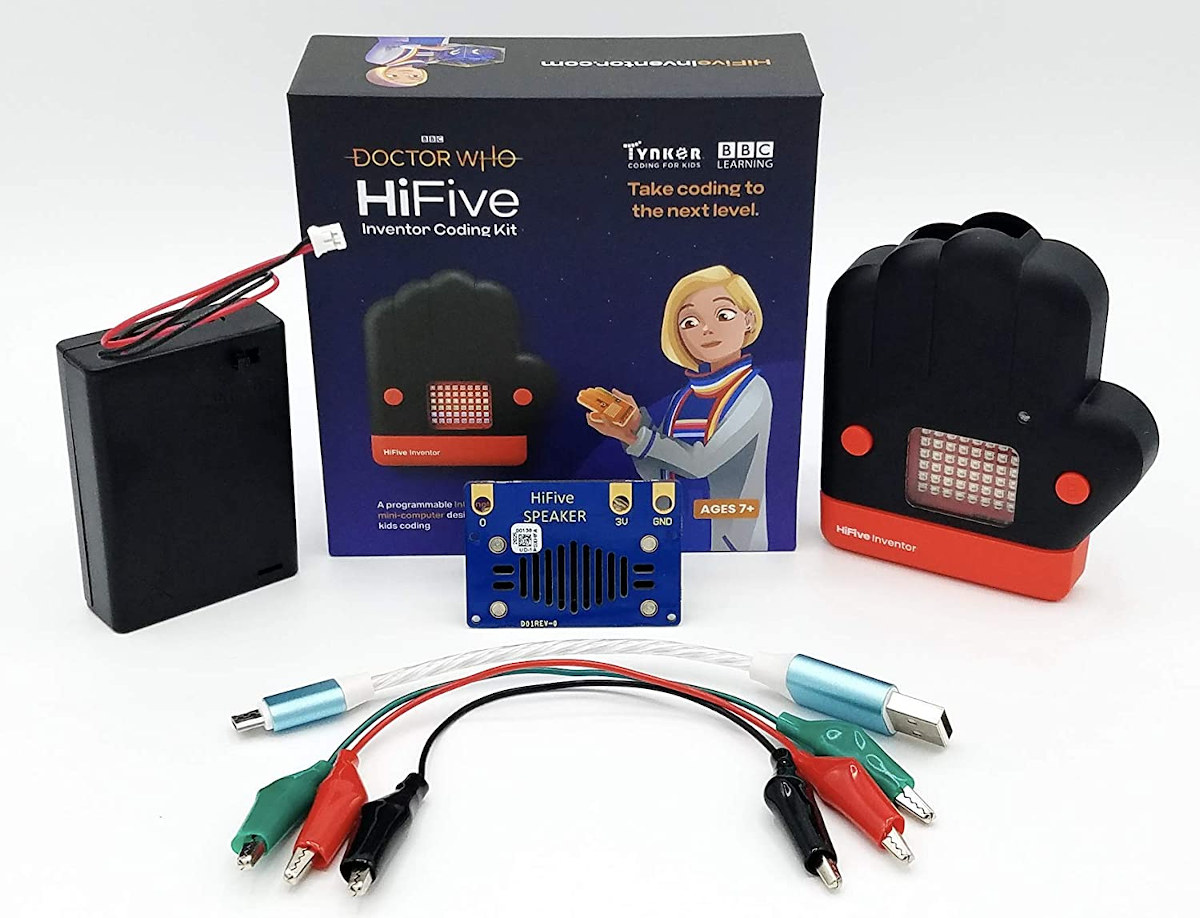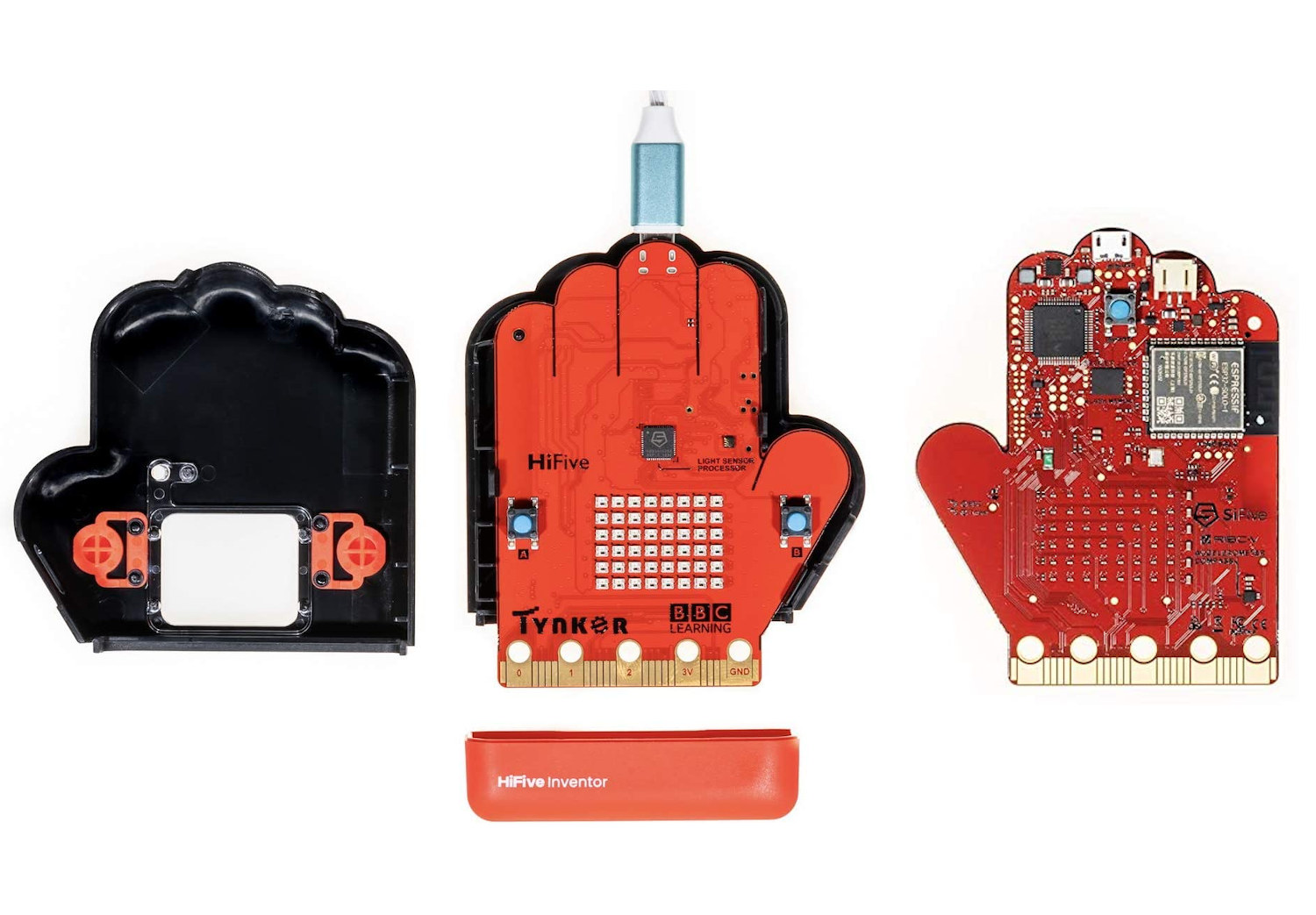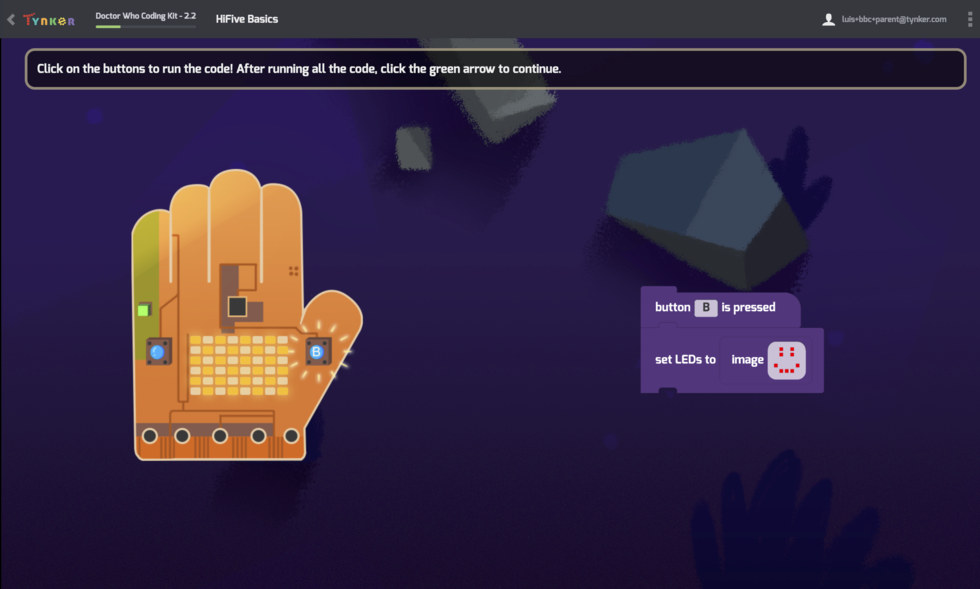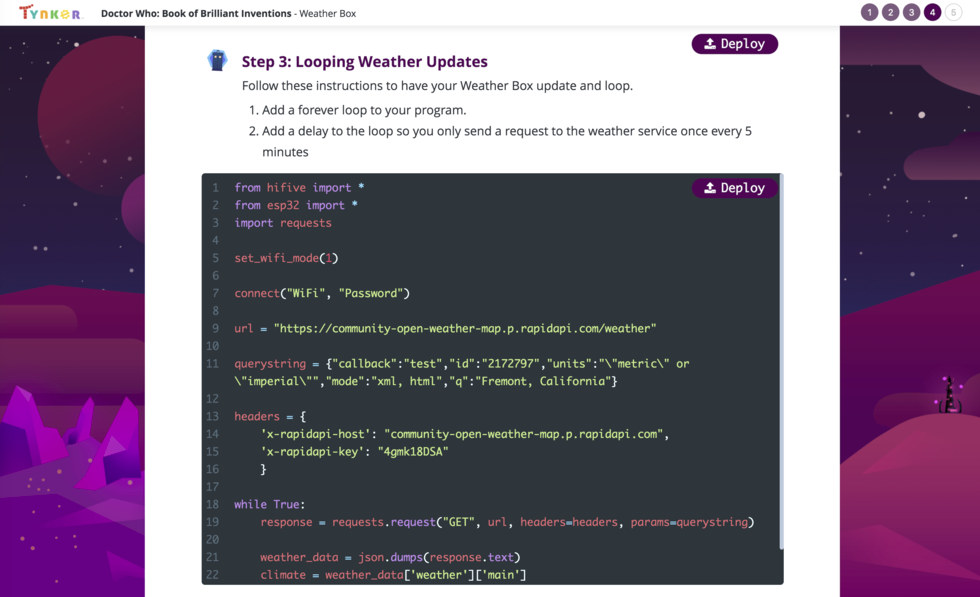In what should be one of the first RISC-V education platforms, the BBC, Tynker, and SiFive have just announced the BBC Doctor Who “HiFive Inventor” Coding Kit that comes with an MCU board with WiFi & Bluetooth and guided lessons for kids that teach them to code for the IoT.
The HiFive Inventor board is based on a SiFive FE310 RISC-V microcontroller ( the same chip as found in the HiFive1 board) and an ESP32 Solo module for WiFi 4 and Bluetooth 4.x/5.x connectivity. Just like the BBC Micro:bit, HiFive Inventor provides a kids-friendly edge connector with I/O, an LED matrix, sensors, and more.

The kit includes the HiFive Inventor hardware platform, a battery holder for three AA batteries (not included), the HiFive Speakers, an illuminated USB cable for power and programming, and alligator clips to connect the speaker or other add-ons to the HiFive Inventor board.
HiFive Inventor board looks to be based on the earlier SiFive Learn Inventor, with some variation such as the use of a single-core ESP32 module, and should offer the following hardware specifications:
- SoC – SiFive FE310-G003 32-bit RISC-V (RV32IMAFC) processor @ 150 MHz with 64KB of internal SRAM
- Storage – 512 KB flash
- “Display” – 8×6 array of RGB LEDs
- Connectivity – 2.4 GHz 802.11b/g/n WiFi 4 and Bluetooth 4.x/5.x via ESP32-SOLO-1 module featuring Espressif ESP32-S0WD single-core Xtensa LX6 processor, and 4MB SPI flash
- USB – 1x Micro USB port for power and programming/debugging
- Expansion
- A/D Converters (four) accessed via onboard coprocessor
- BBC Micro:bit compatible edge connector with I2C, SPI, UART, GPIO, 3.3V, and GND signals
- Sensors – eCompass module with 3-axis acceleration and magnetometer, ambient light sensor, thermometer accurate to 1°C over -40° to +85°C range
- Misc – Real-Time Clock, two user push-buttons, hard reset button
- Power Supply
- 5V via micro USB port
- Battery operation via 3x AA batteries (recommended)

and Python (MicroPython) programming for advanced learners.
The lessons follow stories set in the world of Doctor Who for game-based learning. This step-by-step approach reminds me a little bit of my experience with the CrowdPi2 Raspberry Pi 4 laptop designed for STEM education, and it should certainly be an entertaining way of learning to code for IoT projects.
BBC Doctor Who “HiFive Inventor” Coding Kit is up for pre-order on Amazon for $74.95 with the official release scheduled for November 23rd. Additional information, including a Getting Started Guide, can be found on the official website.

Jean-Luc started CNX Software in 2010 as a part-time endeavor, before quitting his job as a software engineering manager, and starting to write daily news, and reviews full time later in 2011.
Support CNX Software! Donate via cryptocurrencies, become a Patron on Patreon, or purchase goods on Amazon or Aliexpress






